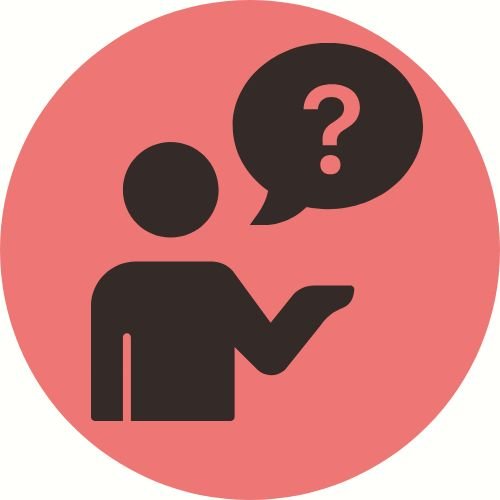Set financial boundaries with your family
This guide isn’t theory. It’s shaped by years of coaching sessions, real conversations, and the practical shifts that people tested until they found what actually works.
Money and family don’t always mix. Set limits that protect you and your relationships.
It usually starts small. A loan here, a phone bill there. A quick “just until payday.” And because you care, you help.
But what happens when payday comes and goes, and you're still covering the difference? Or when “just this once” becomes the new normal?
Setting financial boundaries with family is hard, especially when you love them. You don’t want to come off as stingy or selfish. You don’t want to create tension. And maybe part of you worries they won’t understand, or worse, that it’ll hurt the relationship.
But here’s the thing: boundaries don’t break relationships. Poor communication, resentment, and financial strain do.
When you set boundaries with care, you’re not shutting people out; you’re showing up for yourself and giving the relationship a better chance to thrive.
This space is designed to guide you through the messy middle: from confusion and guilt to clarity and confidence. You’ll get tools, scripts, and resources to help you figure out what you need and how to communicate it with love, not shame.
This guide will help you:
Reflect on your current financial dynamics
Get clear on where boundaries are needed (and why it’s hard)
Start having respectful, firm conversations
Explore tools and support to protect your peace long-term
Step 1: Reflect on how you want to handle your finances when it comes to family
Before we jump into what to say or how to say it, let’s slow down and look at what’s really happening under the surface.
Financial boundaries are rarely just about money. They're often tangled up with identity, loyalty, fear, guilt, and love. And that’s what makes them so complicated.
Let’s name a few common patterns, just in case any of these sound familiar:
The fixer: You feel responsible for solving everyone's problems, even when your own finances are stretched.
The peacekeeper: You say yes to avoid tension, even if it eats at you later.
The golden goose: People assume you'll just figure it out because you always do.
The guilt magnet: You feel selfish for keeping what's yours, even if you’ve already helped. (Mabel is definitely clapping from the sidelines here.)
The silent simmer: You never said no out loud, but now you’re boiling inside.
Sometimes, it starts with love. But over time, it becomes a cycle; one that drains your energy, strains your relationships, and keeps you stuck.
Let’s untangle it.
Reflection activity
Grab a notebook or open a note on your phone and take 10–15 minutes to reflect honestly. These questions aren’t meant to shame you. They’re meant to help you understand your own patterns and priorities.
Your financial role and history
What role have I taken on in my family when it comes to money? (Helper, lender, rescuer, silent supporter?)
Did someone in my family teach me that “good people always help”?
How did my family handle money when I was growing up? How might that be influencing me now?
Moments that didn’t sit right
When have I said “yes” and regretted it? What was going through my head at the time?
Have I ever lent or given money and felt resentful later? Why?
Are there any “small” moments I keep replaying in my head?
Emotions and fears
What do I fear will happen if I say no?
What do I feel when someone asks me for money? Maybe guilt, panic, dread, or pressure to fix it?
What story am I telling myself when I think about setting a boundary?
What do I actually want?
What does healthy support look like to me?
What would I feel proud of (not just obligated to do)?
What kind of relationship do I want with this person, and how might boundaries protect that?
Mabel’s Corner: Are you really going to say no?
Mabel says:
”Oh dear. Someone asked you for money again, and you're thinking about setting a boundary? Are you sure that’s wise?
“What if they get upset? What if they think you're selfish? What if it ruins everything forever?
“Maybe just this once…
(Mabel has always believed in just this once.)
“Look, I know you’re tired and your credit card is crying, but wouldn’t it be worse if they thought you didn’t care? You’re such a good person. You always help. Helping is who you are.
“Right?
“Right??”
(Poor Mabel. She means well. But she’s kind of exhausting.)
What your wiser self might say back to Mabel
“Hey Mabel. I hear you. You’re scared people won’t love me if I don’t keep saying yes. But I’ve spent a lot of time proving my love with my wallet, and it’s wearing me down.
“Here’s the thing:
I can say no and still be a kind, generous person.
I can set limits and still care deeply.
I can protect my peace and still be there for my family in ways that feel good, not draining.
“I don’t have to sacrifice myself to stay connected. The people who really love me? They’ll understand, or they’ll learn how.
“Boundaries aren’t rejection. They’re relationship maintenance. And I’m finally learning how to take care of both of us.”
Step 2: Take action and set financial boundaries
Now that you’ve unpacked your role, your emotions, and your “why,” it’s time to start reshaping the how. And no, this doesn’t mean you need to cut people off or deliver a dramatic speech (unless you want to, in which case, please film it for educational purposes).
This step is about moving from automatic yes to intentional choices. It's time to build boundaries that feel firm but kind, and learning to communicate them without freezing or giving in.
Try one small step this week
Pick one of these actions and try it on for size:
Write a boundary script. Not sure what to say the next time someone asks for money? Draft a short, calm response ahead of time so you’re not caught off guard. (Tip: “Let me think about that and get back to you” buys you time and sets a tone.)
Set a monthly “give limit.” Look at your finances and decide if you want to give, and how much. This turns emotional decisions into intentional ones.
Practice saying no in low-stakes situations. Turn down a small request and notice how it feels. Did the world end? Probably not. (But Mabel might need a tissue.)
Check your patterns. Pay attention to how you feel before, during, and after saying yes. If you feel resentment brewing, that’s your cue to pause and reassess.
Start a “financial boundary journal.” Track every request you get, your response, and how you felt afterward. Patterns love to reveal themselves when given the spotlight.
Resources worth exploring
Financial Boundaries Toolkit
This workbook will help you figure out what it’s costing you to support your adult child and will give you tools to help you change your enabling relationship.
Books to help you set and hold financial boundaries
*Set Boundaries, Find Peace by Nedra Glover Tawwab
A modern classic on boundary-setting. Clear, compassionate, and action-focused. While not money-specific, it gives you the language and confidence to stand firm without guilt.
*The Soul of Money by Lynne Twist
This one’s less about spreadsheets and more about mindset. It digs into the emotional and spiritual side of our relationship with money, especially the scarcity mentality that often fuels guilt-based giving.
*Boundaries by Dr. Henry Cloud & Dr. John Townsend
A faith-based but widely applicable guide to setting boundaries with family, friends, work, and more. Includes examples of what healthy boundaries look like and how to hold them.
*The Financial Diet by Chelsea Fagan
A smart, snappy book that covers money, mindset, and lifestyle. Great if you want a down-to-earth, millennial-friendly take on managing your finances with intention.
*Heads-up: Some of the links on this page are affiliate links, which means I may earn a small commission if you choose to make a purchase, at no extra cost to you. I only recommend tools and resources I genuinely believe are helpful. Thank you for supporting the work I do here.







